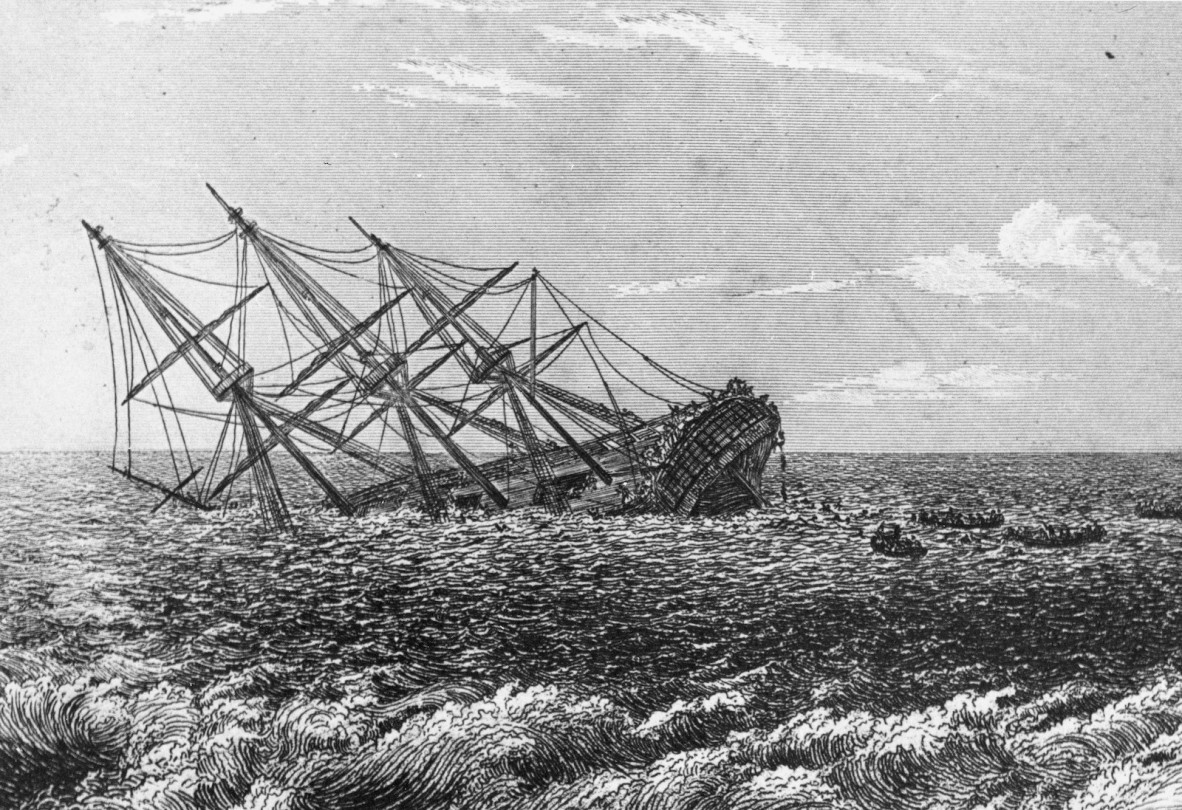H.M.S. Pandora : earliest recorded shipwreck on the Queensland coast
By Simon Miller, Library Technician, State Library of Queensland | 13 September 2012
So begins the account written by George Hamilton, Surgeon aboard the Pandora, one of several accounts of that ship’s doomed voyage held in the State Library’s collections. Hamilton’s sometimes colourful account can be contrasted with the dry style of the official reports of Captain Edwards and the narrative of Midshipman David Renouard, a young man on his first sea voyage
George Hamilton’s journal was published along with Captain Edwards’ official reports in Voyage of H.M.S. ‘Pandora’ in 1915. The library also holds The voyage of the Pandora’s tender which reprints a copy of the narrative of Midshipman David Thomas Renouard who was aboard a schooner built by the Bounty mutineers at Tahiti and commandeered by Captain Edwards as a tender for the Pandora. The tender became separated from the Pandora and the small ship with a crew of nine men with little food and water aboard and minimal instruments made it’s own way across the pacific, through the reefs and on to Surabaya where they were eventually reunited with the surviving crew of the Pandora.
The Pandora was successful in at least the first part of its mission, arriving at Tahiti and capturing the fourteen Bounty mutineers who had stayed on the island. Of Fletcher Christian and the other men with him who had left the island on the Bounty they found no sign. They had passed within a hundred miles of Pitcairn Island on their way to Tahiti without ever sighting the refuge of the mutineers and were now searching in the wrong direction.
The captured mutineers were kept in a round cage constructed on the deck of the Pandora, handcuffed and manacled during the months that the ship and her crew sailed among the islands of the Pacific looking for some sign of the Bounty and the remaining men. Eventually, Captain Edwards, who had been waiting for several weeks in the vicinity of Annamooka Island in the hope that the missing tender would rejoin them, decided to head for home.
Towards the end of August the Pandora was sailing along the Great Barrier Reef searching for Endeavour Strait, the strait through which Captain Cook had passed in 1771. They had earlier sighted the coast of New Guinea and could have passed safely through Torres Strait by hugging that coast but his orders were to ‘examine and survey Endeavour Strait’ which lay further south, close to Cape York. Late in the afternoon on 28 August one of the ship’s boats was sent out to survey what they hoped was the break in the reef they were looking for. George Hamilton the Surgeon recorded what happened next.
The night that followed was a desperate nightmare for all aboard. It was an exceeding dark, stormy night ; and the gloomy horrors of death presented us all round, being every where encompassed with rocks, shoals, and broken water. About ten she beat over the reef ; and we let go the anchor in fifteen fathoms of water. The crew worked at the pumps all night to keep the ship afloat. The guns were thrown overboard and attempts were made to run a sail under the ship to stem the flow of water but there was no hope of saving the ship.

Three of the prisoners had been released to help with the pumping but the others remained chained and locked in their cage on the deck. The Captain evidently gave no orders for their release even as the ship was sinking. If it was not for the master-at-arms throwing them the keys so they could release their chains and a boatswains Mate pausing in his scramble for safety to open the gate at the top of the cage all the prisoners would have drowned. As it was four of the prisoners as well as 31 of the crew were drowned. The 99 survivors were in not much better shape with only the ships four boats and little in the way of food and water. They landed on a small sand island and the Surgeon summed up their position.
Some water was found on the coast and at several islands along the way although landing to collect it was a risky business. They tried to keep the four boats together with tow ropes but these tended to break in rough seas and several times had to be abandoned as the tow ropes threatened to pull the boats apart. They did manage to keep the boats together and reached Coupang, a Dutch settlement in Timor, after three weeks of danger and deprivation. Eventually Captain Edwards brought the ten surviving prisoners to England where they were tried for mutiny. Four were acquitted, two were pardoned, one was later reprieved and three were hanged.
A full account of the voyage and wreck of the Pandora can be read in Pandora's last voyage by Geoffrey Rawson, published in 1963. Information on the wreck of the Pandora and hundreds of other shipwrecks on the Queensland coast can be found in Wrecks on the Queensland Coast 1791-1992 by Jack Loney. George Hamilton records that a cat was rescued from mast of the sunken Pandora and this has inspired a retelling of the story from the point of view of the ship's cat by Queensland author Belinda Walker in Pandora's Cat published in 2007.
Simon Miller - Library Technician, State Library of Queensland
Comments
Your email address will not be published.
We welcome relevant, respectful comments.